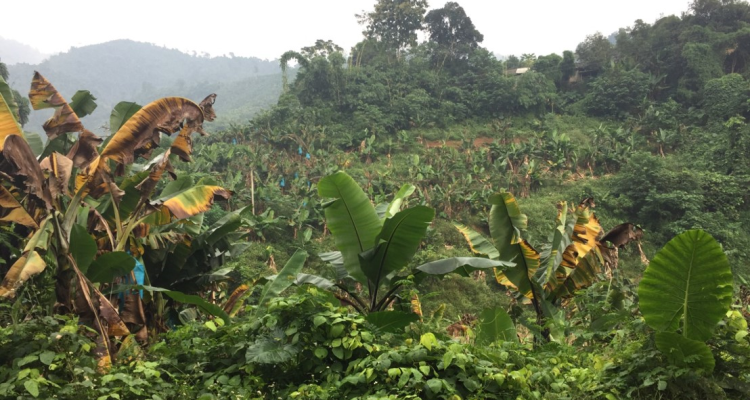
Project
Friend or Foe: Exploring endophytic colonization by the banana pathogen Fusarium odoratissimum
Global banana production is facing several serious threats. One of them is a devastating fungal disease called Fusarium Wilt of Banana (FWB). Although FWB causes severe damage to bananas, it is a harmless colonizer of other plants. In my research, I want to find out why the causal fungus aggressively kills banana but is an innocent colonizer of other plants. I will do this by examining fungal colonization in different host and non-host plant species and identifying key genes involved in this lifestyle switch.
Background
Bananas are among the world’s most important fruits, both economically and socially, but banana (Musa spp.) cultivation is seriously threatened by the devastating disease Fusarium Wilt of Banana (FWB). This disease has a major impact on global banana production, affecting both the banana export industry as well as small-holder farmers who rely heavily on bananas for their income.
FWB, also referred to as Panama disease, is a fungal vascular wilt disease, causing severe damage to banana plants. The causal agents of this disease are pathogenic soil-borne fungi belonging to the Fusarium genus, now known as F. oxysporum odoratissimum. They infect susceptible hosts through the roots and progress into the vascular tissue, eventually clogging the xylem. The colonization of the xylem leads to external symptoms like chlorosis of the foliage and splitting of the pseudostem base. As the disease progresses, severe wilting occurs and the plants eventually collapse.
To date, there are no effective treatments for FWB. The use of clean planting materials and quarantine measures are the only way to prevent the spread of the disease. The lack in genetic diversity amongst the cultivated banana due to its clonal propagation makes bananas extremely vulnerable to disease. In addition, contaminated soil, tools, and water all contribute to the spread of the disease.
Project description
In the past few years, a new survival strategy of TR4 has been discovered. It has been shown that TR4 can reside in the roots of certain weeds that are found on banana plantations and may act as alternative hosts. TR4 residing in alternative hosts in absence of its true host contributes to the persistence of the pathogen and complicates disease control. So far, very little is known about the colonization of alternative hosts by TR4. Most data published on the endophytic behavior of TR4 has only focused on the roots. Understanding the colonization behavior of TR4 in alternative hosts will help set up better disease control measures. In addition, understanding the interaction between TR4 and its alternative hosts could provide more insight into the different lifestyles of TR4.
In this research, I will explore the endophytic colonization by F. odoratissimum, TR4. First, I will assess the degree of TR4 colonization in banana and other plant species using fungal recovery assays, qPCR and microscopy. Second, I will perform a large-scale dual RNA sequencing analysis to find candidate genes, from both the fungus and plant, putatively involved in modulating endophytic colonization. Lastly, I will validate my findings in bio-assays to confirm the involvement of the fungal and plant genes in endophytic colonization.